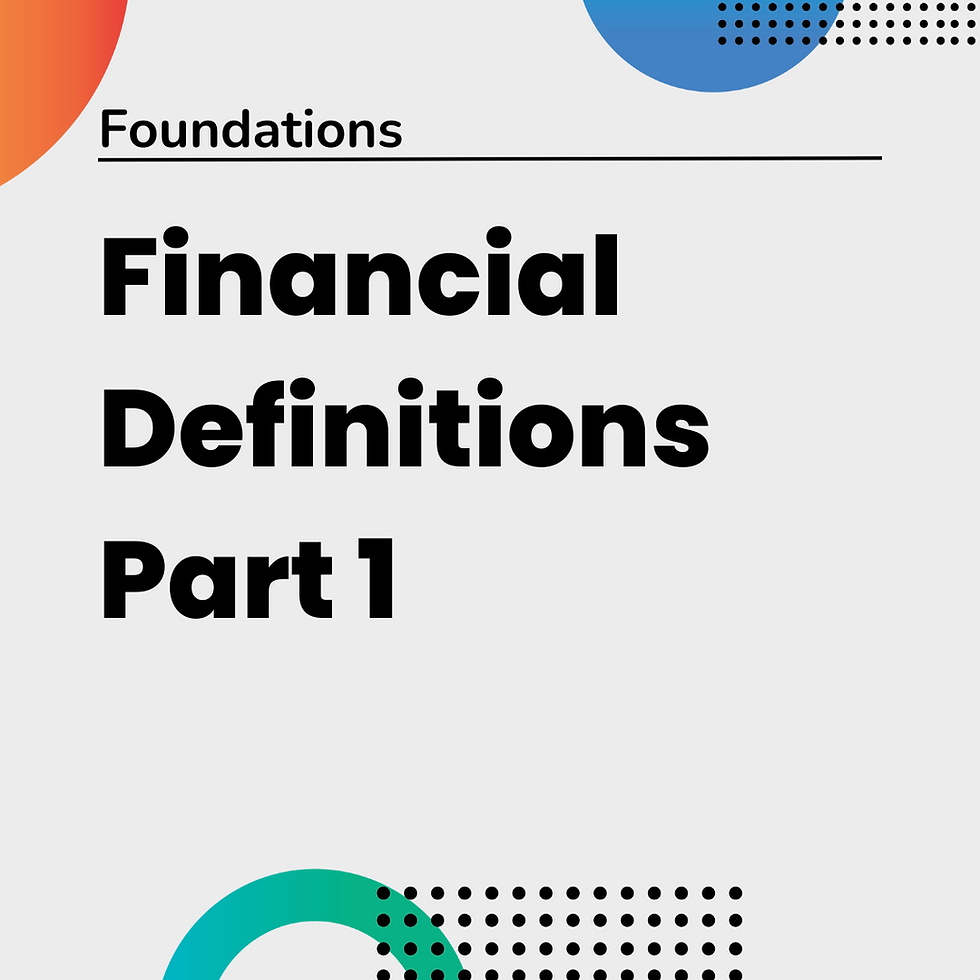Foundations: Financial Definitions Part 2
- Timothy Iseler

- Jan 8, 2020
- 3 min read
Updated: Mar 30, 2023
Here are some more definitions to consider, this time focusing on mutual funds. Some may be familiar but still a little foggy, some totally new. (Definitions largely poached from investopedia.com.)
Mutual fund – A mutual fund is a type of financial vehicle made up of a pool of money collected from many investors to invest in securities like stocks, bonds, money market instruments, and other assets. This allows investors to participate in ownership of a large number of stocks, bonds, etc., but without buying positions in each.
Open-End fund – This is what most people think of when they use the term mutual fund. An open-end fund is a type of mutual fund that can issue an unlimited number of shares. The fund sponsor sells shares directly to investors and redeems them as well. These shares are priced daily, based on their current net asset value (NAV).
Close-End fund – Though technically a type of mutual fund, this is generally not what people mean when they use that term. A closed-end fund is a mutual fund that raises a fixed amount of capital through an initial public offering (IPO) and then lists shares for trade on a stock exchange. Like a mutual fund, a closed-end fund has a professional manager overseeing the portfolio and actively buying and selling holding assets. Similar to an exchange-traded fund, it trades like equity, as its price fluctuates throughout the trading day.
Index fund – An index fund is a type of mutual fund with a portfolio constructed to match or track the components of a financial market index, such as the Standard & Poor's 500 Index (S&P 500). An index mutual fund is said to provide broad market exposure, low operating expenses and low portfolio turnover. These funds follow their benchmark index no matter the state of the markets.
Expense ratio – The expense ratio (ER) measures how much of a fund's assets are used for administrative and other operating expenses. This is very important to consider when choosing funds, since all fund shareholders pay a percentage of their assets back to the fund in this way. If two funds perform equally well but one has a lower expense ratio, a shareholder of that fund will realize greater returns over the long term by having given up less each year along the way.
ETF – A stock ETF, or exchange-traded fund, is an asset that tracks a particular set of equities, similar to an index. It trades just as a normal stock would on an exchange, but unlike a mutual fund, prices adjust throughout the day rather than at market close.
S&P 500 – when people refer to ’the market’, they are typically talking about the S&P 500. The Standard & Poor's 500 is a list of 500 large US companies ranked by market cap (with liquidity and profitability screens). The companies are weighted within the list so that the larger companies move the performance of the group more than the smaller companies. As an example, a change in the value of Microsoft (with a market cap of over $1T) stock makes a bigger impact on the performance of the index than a change for Nordstrom (at 5.9B market cap).
Market cap – Market capitalization is the aggregate market value of a company represented in dollar amount. Since it represents the “market” value of a company, it is computed based on the current market price of its shares and the total number of outstanding shares. Basically – take the total number of outstanding shares of a company and multiply that by the current share price to find the market cap.
Timothy Iseler, CFP®
Founder & Lead Advisor
Iseler Financial, LLC | Durham NC | (919) 666-7604
Iseler Financial helps creative professionals remove stress while taking control of their financial futures. As both advisor and accountability partner, we help identify current strengths and weaknesses, clarify and refine your long-term goals, and prioritize understandable, manageable, and repeatable actions to bring long-term financial well-being. Reach out today to take the first step.




Comments